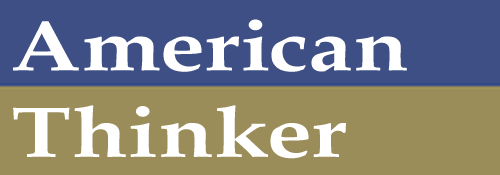In August of last year I wrote an article, "The Biggest Missing Story in Politics," which reviewed the single most important datum in the last thirteen Battleground Polls over a period stretching from early 2002 to late 2008. The critical fact, completely ignored by almost everyone, was that in answering Question D3, which asked the respondent what he considered his ideology to be, sixty percent of the American people described themselves as "conservative" or "very conservative."
In every single Battleground Poll, conservatives vastly outnumbered not only liberals, but moderates and undecided respondents combined. The Battleground Poll itself is a bipartisan poll, combining the resources of the Tarrance Group and Lake Research Partners. Unlike many polls driven by newspapers, networks, or other agenda driven organizations, this poll is one of the few which has no ideological agenda or partisan bias.
The last Battleground Poll, which came out after my article, no longer revealed the answer to Question D3. Did that mean that America, suddenly, stopped being an overwhelmingly conservative nation and had been seduced by Obama into being moderate or Leftist? No. The Tarrance Group did reveal the ideological breakdown of Americans, although in a different way than in the thirteen prior Battleground Polls.
Those earlier polls had asked people to describe themselves as "very conservative," "somewhat conservative," "moderate," "don't know," "somewhat liberal," or "very liberal." Those who chose "very conservative" or "somewhat conservative" were as low in some of the thirteen polls as 58% of the nation and as high in other polls as 63% of the nation, and the average of the polls was a rock solid 60%, year in and year out.
The Tarrance Group chose to look at ideology differently in its post-election poll. Respondents were asked to refine their definition of "conservative." So instead of being asked about the intensity of their ideology (i.e. "very conservative" versus "somewhat conservative"), the Battleground Poll changed the question.
Two questions replace the old Question D3. Now Americans were asked on social issues if they were "very conservative," "somewhat conservative," "moderate," "somewhat liberal" or "very liberal" as well as on fiscal issues if they were "very conservative," "somewhat conservative," "moderate," "somewhat liberal," or "very liberal." The Tarrance Group also provided data on the answers to this question within political parties.
The responses illuminated some aspects of the prior polls, but the over all result was the same: Americans, overwhelmingly, are conservative. There were some differences between social conservatives and fiscal conservatives. Twenty-six percent of Americans call themselves "very conservative" on fiscal issues and forty-three percent consider themselves "somewhat conservative" on fiscal issues. One percent of America is moderate on fiscal issues -- that vital "center" of American politics! -- and three percent "don't know." Twenty-two percent of Americans are "somewhat liberal" on fiscal issues, and a piddling five percent of Americans are "very liberal" on fiscal issues. When the mushy "moderate" and "don't know" respondents are excluded, fiscal conservatives outnumber fiscal liberals by seventy-four percent to twenty-six percent.
Social conservatives are the clear majority of America too, although the numbers are not quite as overwhelming. Thirty-four percent of America, more than one person in three, is "very conservative" on social issues and nineteen percent are "somewhat conservative" on social issues. One percent is moderate on social issues - again, that vital "center" of American politics! - and seven percent "don't know." Twenty percent are "somewhat liberal" on social issues and nineteen percent are "very liberal" on social issues. When the mushy "don't know" and moderates are taken out, social conservatives outnumber social liberals fifty-nine percent to forty-one percent.
Tarrance also helps explain what Sarah Palin and Rush Limbaugh are so popular with Republicans. Seventy-four percent of Republicans are both social and fiscal conservatives. Ninety-one percent of Republicans are fiscal conservative. And seventy-seven percent of Republicans are social conservatives. Any effort to change the Republican brand ought to begin with that dramatic fact.
What about Obama's own political party, the Democrats? Only forty-two percent of Democrats are both social liberals and fiscal liberals. Perhaps more amazing, twenty-three percent of Democrats, almost one in four, describe themselves as both social conservative and fiscal conservative. Forty-seven percent of Democrats describe themselves as fiscal conservatives, and thirty-four percent of Democrats describe themselves as social conservatives. Fifty-eight percent of Democrats consider themselves either a fiscal conservative or a social conservative or both.
These results, more detailed and more informative than past responses to Question D3 in previous Battleground Polls, do not alter the profoundly conservative character of the American electorate at all. A social conservative, who was perceived as a social conservative running against a social liberal, would win an easy majority of the American people in any election. A fiscal conservative, who was perceived as a fiscal conservative running against a fiscal liberal, would win a landslide greater than any in the history of these two political parties. A candidate perceive as both a social conservative and a fiscal conservative would win one quarter of the Democrat Party vote, if the Democrat was perceived as a liberal, and sweep the nation easily.
In fact, if a Democrat ran for his party's nomination as a conservative - and if the other candidates for the nomination were perceived as liberals - he ought to be able to compete for the fifty-eight percent of Democrats who were social conservatives, fiscal conservatives, or both. The biggest story in American politics has been answered again, with the data even more detailed and refined. The answer is the same - just the same - America is still, in every way and from every vantage, a conservative nation.





